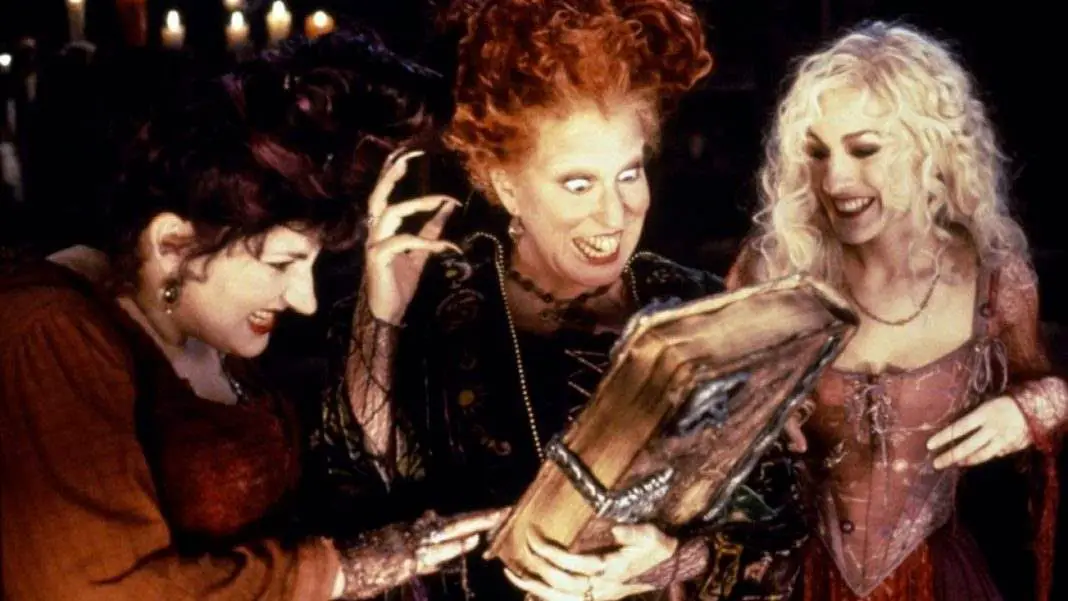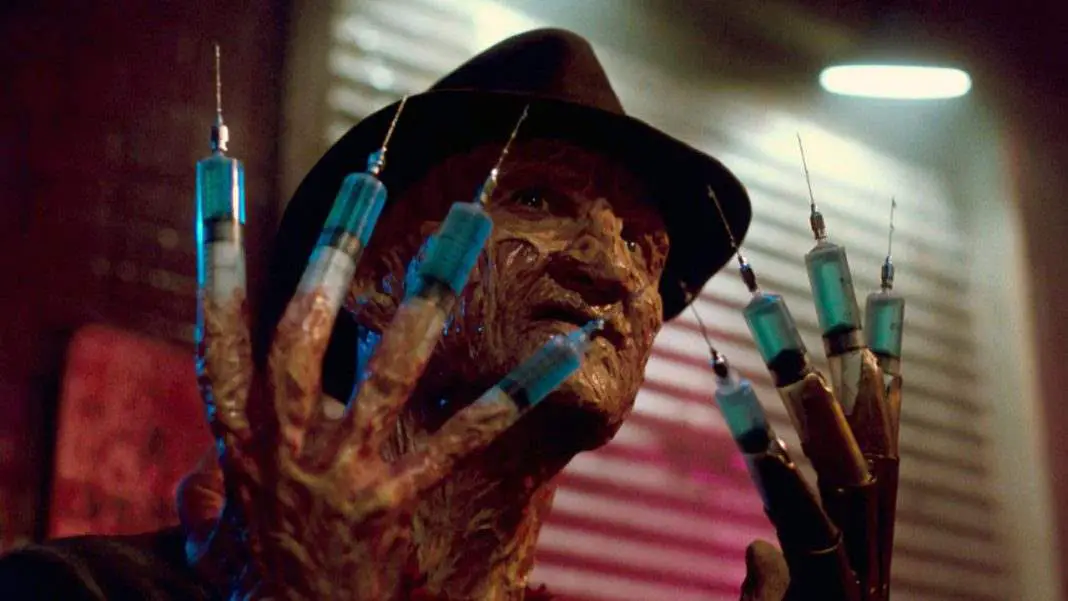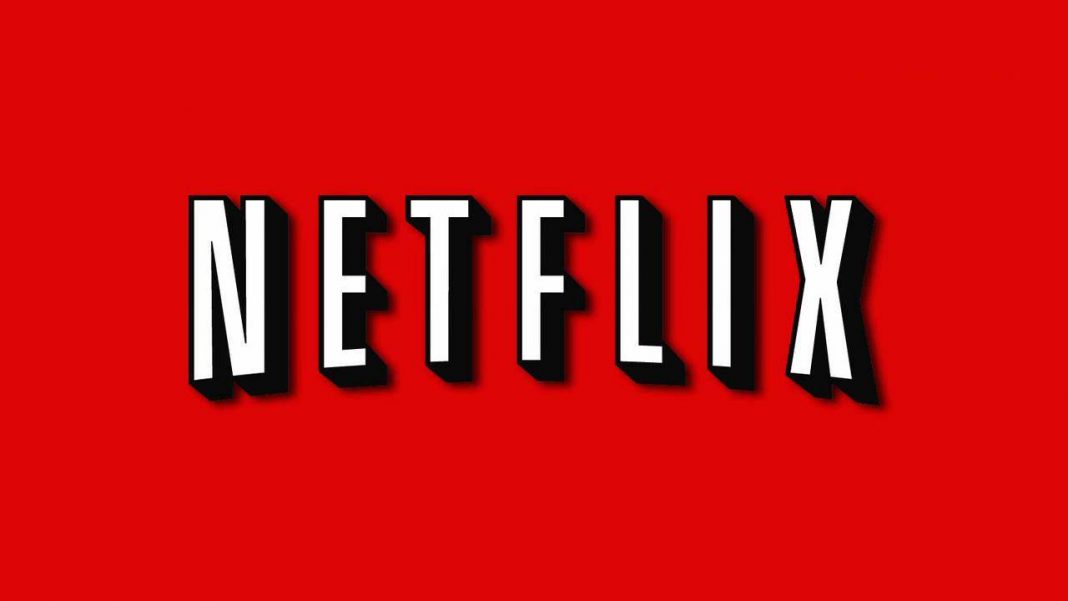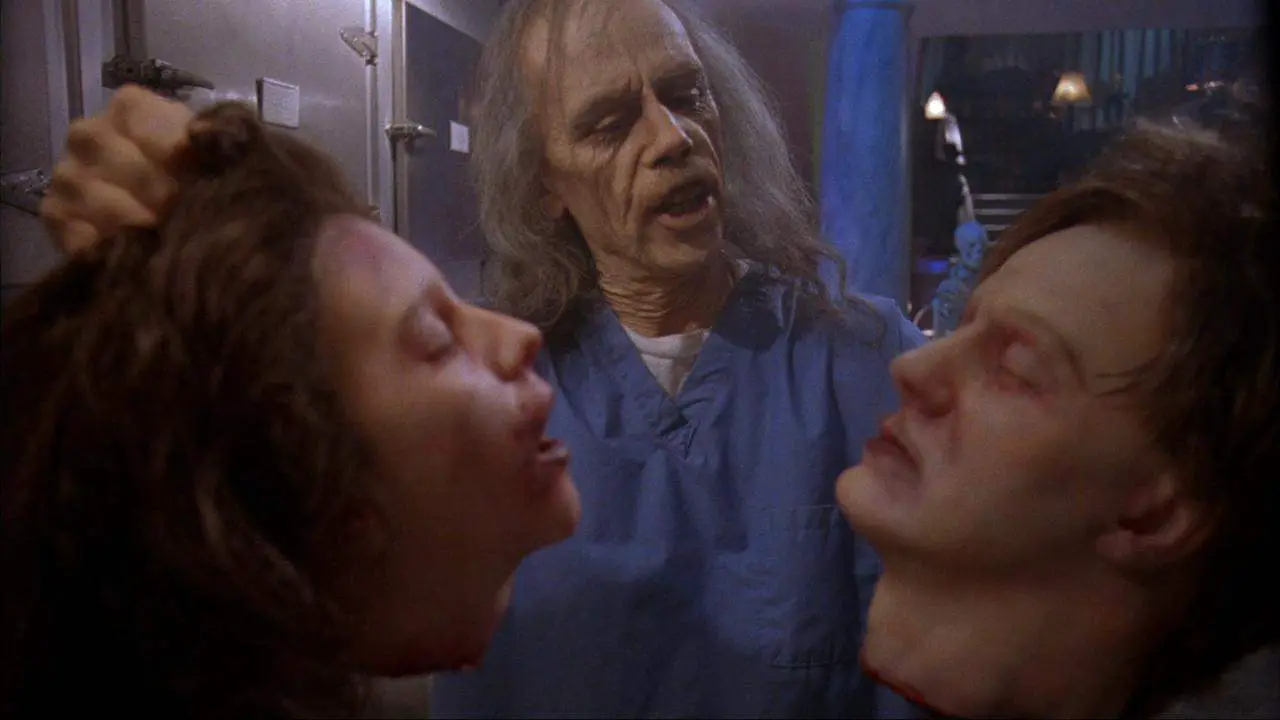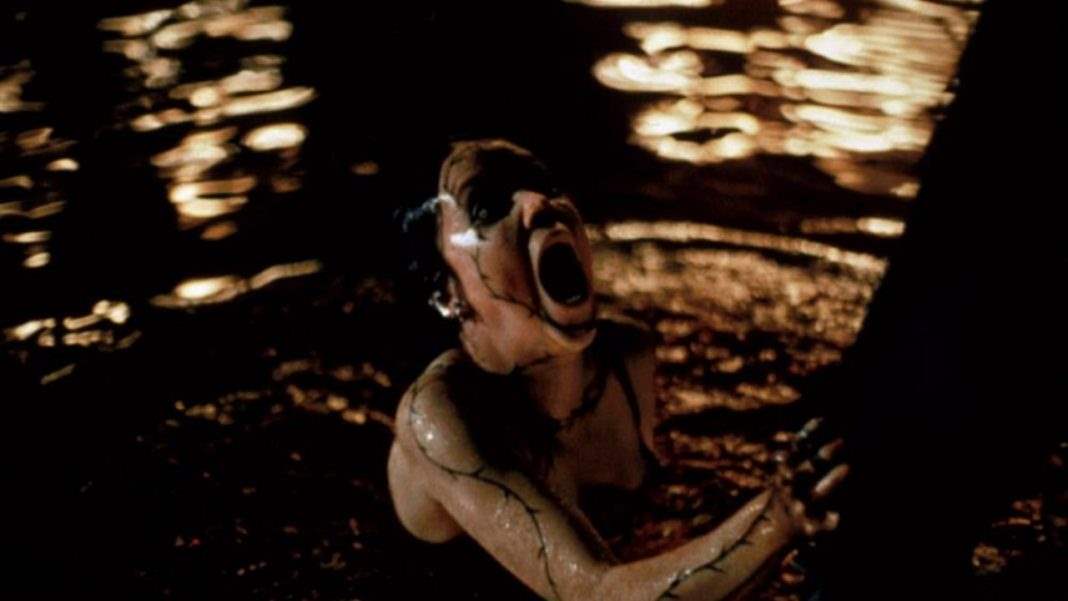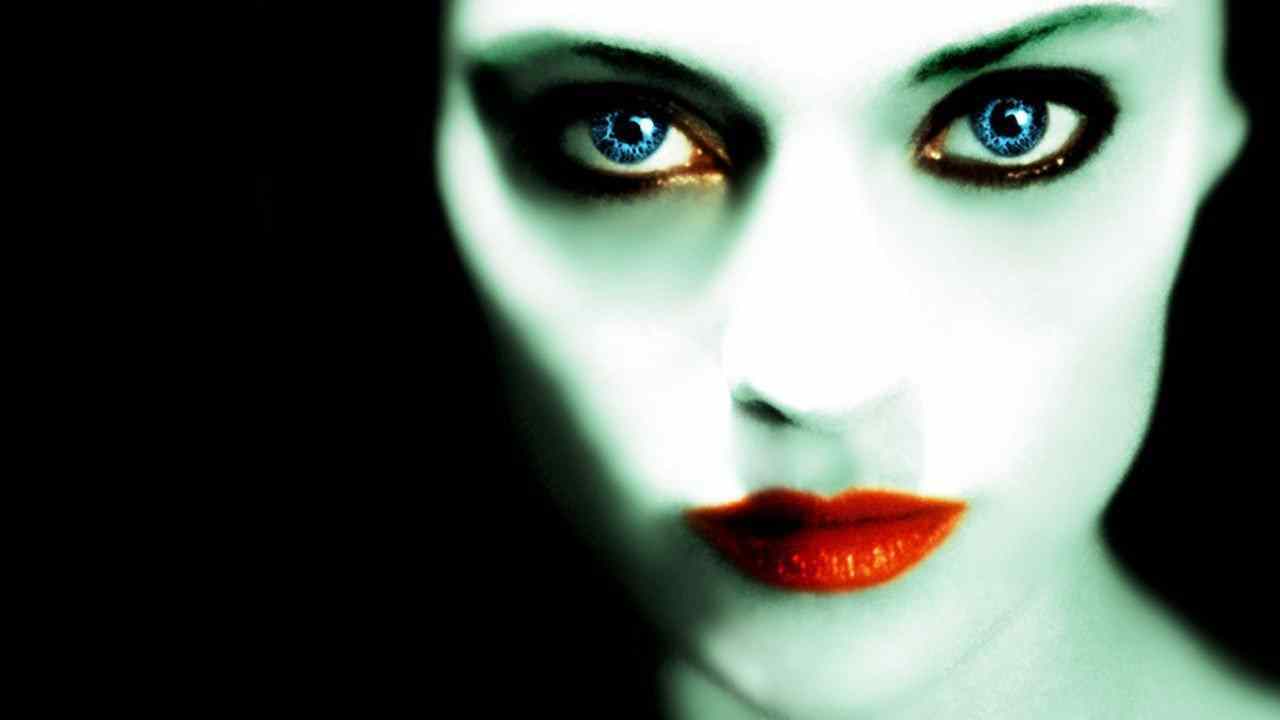Comparing these two movies is interesting because despite telling the same basic story, they could not be more different. The two movies are made by completely different filmmakers with completely different styles. Both movies here have their fans. But when stacked up against each other, how do they fare? How does Rob Zombie’s Halloween compare to the original? Let’s take a look.
JOHN CARPENTER’S HALLOWEEN
Carpenter’s Halloween is a masterpiece. It’s a simple story, but it’s one of the most well made horror movies of all time. The simplistic approach works because it is so effective. We start off with one of the best opening shots in horror history. A tracking shot through the house, learning that we are in the killer’s POV, murdering a teenage girl and then the big reveal that the killer is a six-year-old boy. The teenage cast is strong and likeable, we know just enough about each one of them to really make them feel real. Laurie is a smart, sensitive heroine with an appropriate amount of sass.
Donald Pleasance brings a whole other level of greatness to the movie as Dr. Sam Loomis. He’s the Van Helsing of the piece, the Ahab tracking the whale. The doctor of escaped mental patient Michael Myers, he knows exactly what Michael is capable and knows how important it is to find him before it’s too late. As Michael spends most of the film in the shadows, it’s Loomis that’s really what makes him scary for the bulk of the film. Loomis keeps talking about Myers like some absolute force of evil, so that’s what we believe he is.
Because we know nothing about Michael Myers. That’s what makes him scary in the original Halloween. We know nothing about him. He’s the boogeyman. He’s not so much a character as he is a force. This unstoppable presence. His pure, white mask may be cheap but it’s also the most memorable and iconic look they could have found for their killer.
The violence in the film is scary because there’s so much that we don’t see. There’s maybe a dash of blood, but that’s it. The bodies pop out of doorways and closets like gags in a haunted house and that’s more important than seeing the gory details of the act itself. It’s scarier. It leaves so much to the audience’s imagination, and that’s one thing Halloween excels at. So much of the cinematography draws from Italian psychothrillers and old expressionist films, so there’s a heavy light/shadow contrast in the movie itself. And you can really imagine just about anything in those shadows, because you’re never entirely sure where Michael Myers is and when he might pop up next. Because the movie never gets inside of his head. The movie is from Laurie’s perspective, if anyone’s, and she’s never clear on the danger until it is pretty much too late.
It’s hard to argue, though, that the thing that makes Halloween work above anything else is the score. When John Carpenter showed an early print of the film without the now iconic score, nobody thought it was scary. That music brought it up a notch, heightening the tension throughout the entire film.
HALLOWEEN (2007)
It’s interesting that Rob Zombie’s remake, while solely taking influence from films of Halloween’s era, could turn out to be so different. And it really is an entirely different movie, but that’s probably what makes it even halfway watchable. John Carpenter’s version of The Thing is completely different from the original, but ultimately they tell the same story. While Carpenter’s Halloween is a fairly realistic film right up until its ending, this remake is focused on being completely and totally realistic throughout. It’s a movie very much of the “gritty reboot era” and at least one thing it focuses on is being the Batman Begins of Halloween films.
First off, we get much more time with Michael Myers as a child. Much, much more. What was the opening shot of Carpenter’s original is now the first half hour of this. We see his typically unbearable home life and it’s about as generic white trash as you can get. Young Michael lives in a perpetual episode of Maury. His mom is a stripper, his teenage sister is the biggest slut in school, his stepdad is verbally and physically abusive and his home looks like an episode of Hoarders. Now, we didn’t get to see much of Michael’s home life in the original movie, but from what we could see it looked like it was pretty standard. You couldn’t take one look at his parents and tell how screwed up they were, as you could with this movie. Young Michael also goes on a massacre instead of simply murdering his sister (not edgy enough, apparently). He kills his sister, his boyfriend, his stepdad and a school bully all in one afternoon/evening.
There’s also a lot more of Michael during his years in the sanitarium. In the original Halloween, we saw none of this, except what was reshot for the TV version to pad it for length. These scenes are definitely the best of the movie and really show us into the mind of this new version of Michael. Malcolm McDowell’s Loomis is the most like his original counterpart here and we can tell that he is genuinely trying to break through to this kid. Sheri Moon Zombie is unexpectedly sincere as Michael’s mother.
The rest of the movie is a rushed remake of the original Halloween. It’s really attempting to tell everything after the first scene of the first movie in the second hour of the film. Characters are introduced a little too quickly, but we get a good feel for them. Initially, the movie was going to be split into two parts, with the first film ending with Michael breaking out of the asylum. The second full movie would have been a re-working of the original, and that would have allowed a lot of breathing room, but that’s not the way things went.
Still, this second half is different enough to work well enough on its own as a slasher film. It is again structured like Batman Begins. It’s over an hour until we see Batman, but we spent everything before that watching every element that makes this new character fall into place and it’s the same here. This is a new version of Michael Myers and the first hour of the film is assembling the puzzle pieces and putting them together until you finally get something recognizable. When Michael finds the mask under the floorboards of the old house and puts it on for the first time, it’s a big moment. It even feels almost more like a superhero film than a slasher film.
Zombie was smart enough to include some of Carpenter’s score in his new version of Halloween. And when it’s used, it’s effective. There are also quite a few 70’s songs on the soundtrack, and they also work fairly well. Tyler Bates’ score, which is at times an update on Carpenter’s music while also throwing in a lot of generic gritty horror music that populates just about every horror movie these days, doesn’t work as well.
It’s hard to compare the two films, because on this surface it looks like comparing two films chosen completely at random. Every time Carpenter’s film goes right, Zombie’s goes left. And ultimately, that’s what makes this comparison almost favorable. Because Rob Zombie’s Halloween is definitely watchable, even if it’s a completely different movie. Sometimes his dialogue is insufferable, but the movie is well shot and tells its own weird story. In the end, a remake like this, where you can at least tell the filmmaker really cared about what they were doing and had a very particular vision for the project is better than a shot-for-shot, empty remake like Psycho or The Omen.

